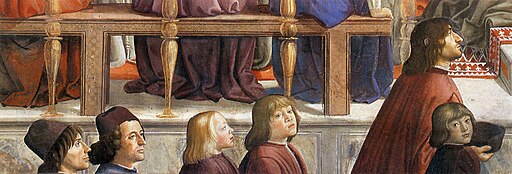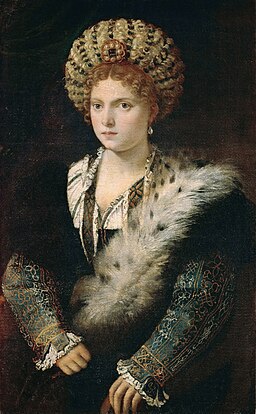
Patrons of Renaissance Art: Roles, Influence & Famous Works
Who were the patrons of the art? Patrons of the arts were typically wealthy individuals who commissioned artists to create works that reflected their own interests and values. Some patrons of art were groups of men who were members of powerful guilds. The intent of many patrons is seen in the artwork.
Historically, art would remain only a minuscule fragment of what it is today if it didn’t enjoy massive support and therefore astounding success during the Renaissance (15th-18th centuries). However, artists painted, sculpted, composed, and wrote only because patrons made it possible. This was because artists depending on arts as a source of livelihood could barely scrounge enough resources to make ends meet let alone make a name for themselves. Patrons of art provided them with the necessary financial backing and social influence.
Money and power were two major requirements for arts patronage and there’s very little surprise that only the aristocrats, royals, notable church figures, governments, and a few others could attempt such a venture. As expected, the patrons of art also influenced the ideas and styles of art in the period. Several notable personalities were involved in patronage and correspondingly helped to define art history as we know it today. Many of the most famous works of art from history were created as a result of a patron’s commission, including the Mona Lisa and the Sistine Chapel.
Who were the patrons of Renaissance art and why were they important?
The Renaissance was a time of great artistic achievement, and much of this progress was made possible by the support of wealthy patrons. These individuals commission works of art, often with specific goals in mind. For instance, a patron might want a painting that celebrates the success of their business, or that features their family crest. The patronage system allowed for a great deal of creativity on the part of artists, who were often able to experiment with new styles and techniques.
What was the role of patrons in the Renaissance?
Renaissance patrons played a very important role in the development of art during that period. They provided the necessary financial support for artists to be able to create their works. They also acted as a source of inspiration for many artists. Without the support of patrons, the Renaissance would not have been possible.
Who were the most influential patrons of the Renaissance?
There were many influential patrons of the Renaissance. Some of the most important were the Medici family, Pope Julius II, and King Ferdinand I. The Medici family was a wealthy Florentine family that supported many artists and writers. Pope Julius II was a powerful pope who commissioned many works of art, including Michelangelo’s Sistine Chapel ceiling. King Ferdinand I was the king of Spain who also patronized many artists, including Titian.
The most famous patron of the Renaissance was probably Lorenzo de’Medici, who was a wealthy Florentine merchant and politician.
Art Patronage by the Aristocracy
Aristocratic patronage of the arts was one of the most significant forces in shaping art history. The aristocrats were the ones who had the money to commission artists to create works of art, and they also had the power to dictate what kind of art was produced. This often meant that only certain kinds of art were created and that other styles were suppressed. However, there were also times when the aristocrats supported more innovative artists, and this helped to promote new styles and movements in the arts.
What impact did Lorenzo de Medici have on the Renaissance?
Lord of Florence from 1469-to 1492, Lorenzo de Medici was one of the biggest patrons of the period. Instead of using his wealth to sponsor would-be artists, he often employed his vast influence to help artists gain financing. Some of the biggest artists in the period – Leonardo da Vinci, Sandro Botticelli, and Michelangelo Buonarroti rose to fame through Lorenzo. Further, Lorenzo’s refined taste in art was reflected heavily in the Florentine Renaissance. His artists, notably Botticelli, saw beauty as a tool to demystify divinity.
Royal Patronage
Art patronage by the Royals was a significant factor in the development of art history. The Royals would commission artists to create works of art that reflected their power and status. These works of art were often very large and elaborate, and they helped to spread the influence of the Royals throughout the country. The patronage of the Royals also allowed for the development of new styles of art, as artists were constantly trying to please their patrons.
The bulk of royal patronage in the period is easily traced back to the French monarchy. Louis XIV spared no resources in surrounding himself with the best artists. Writers like Moliere and Jean Racine sang his praises, and Sculptors like Girardon and Coysevoc made statues for him. Further, he conferred nobility on Painter Charles Le Brun and Architect Jules Hardouin-Mansard. Louis XIV can be regarded as the greatest patron of art history. Classical art was the mainstay as it agreed with the majestic nature of French royalty.
Art Patronage by Women
Women have been important patrons of the arts throughout history. In the Renaissance, for example, many wealthy women commissioned works of art from painters and sculptors. These women patrons helped to support the artists of their time and also helped to shape the course of art history. Today, women continue to be important patrons of the arts, supporting artists and helping to promote the arts through their patronage.
Given the patriarchal order of the Renaissance Society, the patronage of the Marchioness of Mantua, Isabella d’Este stands out. She couldn’t muster the financial strength of her male counterparts, however, she was a patron to notable painters like Leonardo da Vinci and Mantegna artists like Raphael Perugino, and writers like Ariosto.
Some patrons of art were groups of men who were members of powerful guilds. Nuns, monks, confraternities, and merchants also participated in art patronage. The intent of many patrons is seen in the artwork and can help to explain the meaning.
Which source of patronage was the most important for Renaissance artists?
There is debate amongst art historians as to which source of patronage was the most important for Renaissance artists. Some argue that it was the Church, as many artists were commissioned to create religious works for churches and other religious institutions. Others believe that it was wealthy individuals who were the most important patrons, as they were often the ones who commissioned works for their private collections. Still, others believe that it was the state that was the most important source of patronage, as many artists were employed by rulers to create works that glorified their regimes. Ultimately, it is likely that all of these sources of patronage were important for Renaissance artists, as they provided them with the means to support themselves and their families.
Read More about Patrons of Art in the Renaissance Period:
- 06 Automation Tools to Auto-Post

- Real Business Cycle (RBC) Theory Explained

- Nurturing Peace Blossom Luck

This article is written by:
This article is written and edited by in-house writers and editors. Knowledge Netizen editorial team is committed to providing accurate and informative content. You can cite our articles under the author name "NetizenMe"





